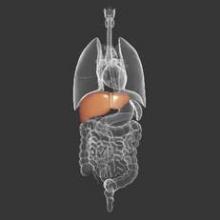Long-term pioglitazone is not only safe for patients with nonalcoholic steatohepatitis (NASH) and prediabetes or type 2 diabetes but is associated with significant improvements in fatty liver disease outcomes, compared with placebo, research suggests.
Investigators randomized 101 individuals with biopsy-proven NASH and either prediabetes or type 2 diabetes to 18 months of 45 mg/day of pioglitazone or placebo, followed by an 18 month open-label phase of pioglitazone, in addition to a hypocaloric diet, according to a paper published online June 20 in the Annals of Internal Medicine.
Among patients randomized to pioglitazone, 58% achieved at least a two-point reduction in their NASH activity score, without a worsening of fibrosis, compared with only 17% of the placebo group (P less than .001).
The pioglitazone group also showed a significantly greater likelihood that their NASH would resolve, with 51% of the treatment group achieving resolution, compared with 19% of the placebo group (P less than .001).
Pioglitazone treatment was also associated with significantly greater improvements in steatosis, inflammation, and ballooning necrosis, as well as mean histologic scores and fibrosis scores (Ann Intern Med. 2016 Jun 20. doi: 10.7326/M15-1774).
The study also showed that only 12% of the pioglitazone group showed progression of any fibrosis, compared with 28% of the placebo group (P = .039), while pioglitazone was associated with significant 2.5 kg weight gain over placebo.
“Because thiazolidinediones target insulin resistance and adipose tissue dysfunction or inflammation that promotes hepatic ‘lipotoxicity’ in NASH (which is also a prominent feature of T2DM), they may be more helpful for treating steatohepatitis in this population,” wrote Dr. Kenneth Cusi, from the division of endocrinology at the University of Florida, Gainesville, and his coauthors.
However, the authors noted that there have been relatively few studies of pioglitazone and its effects on steatohepatitis in individuals with prediabetes or type 2 diabetes.
“This study also has implications for patients with prediabetes and NASH (about half of our participants) because hepatic steatosis is a risk factor for T2DM, even in nonobese patients,” the authors wrote. They suggested that future studies could explore whether the reversal of hepatic steatosis or nonalcoholic steatohepatitis in patients with prediabetes may help to halt the development of type 2 diabetes.
The study was supported by the Burroughs Wellcome Fund and the American Diabetes Association. One author reported nonfinancial support from Takeda Pharmaceuticals in the form of study medication and placebo, and grants and consultancies from pharmaceutical companies outside the submitted work. No other conflicts of interest were declared.


